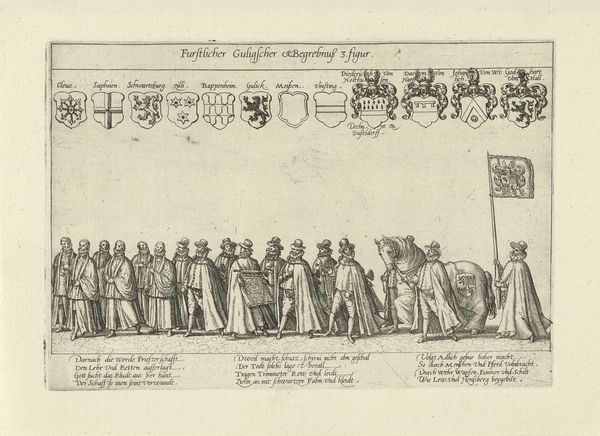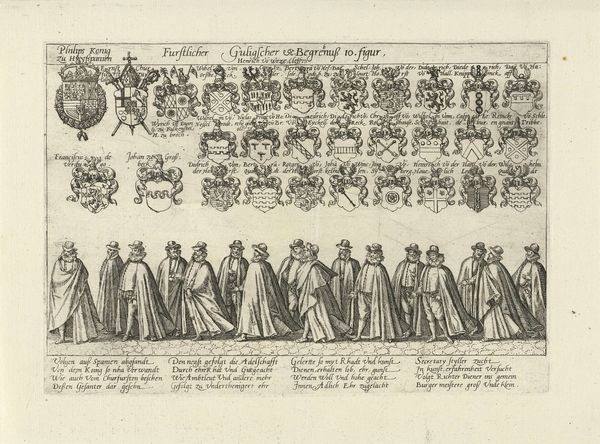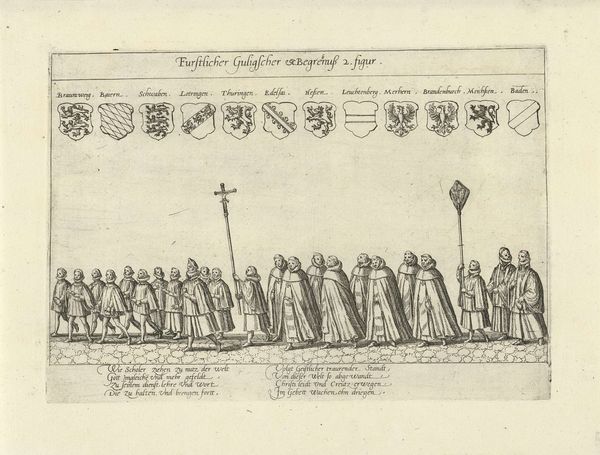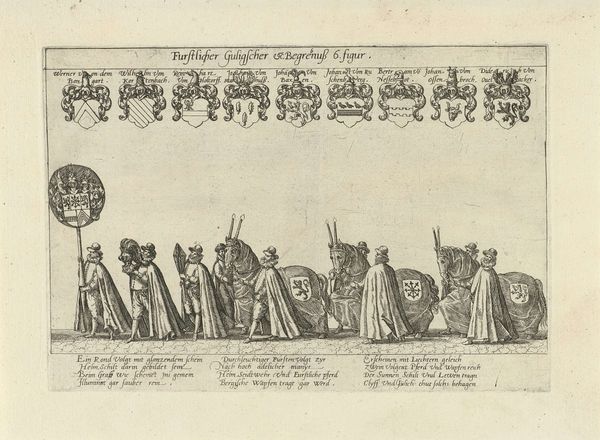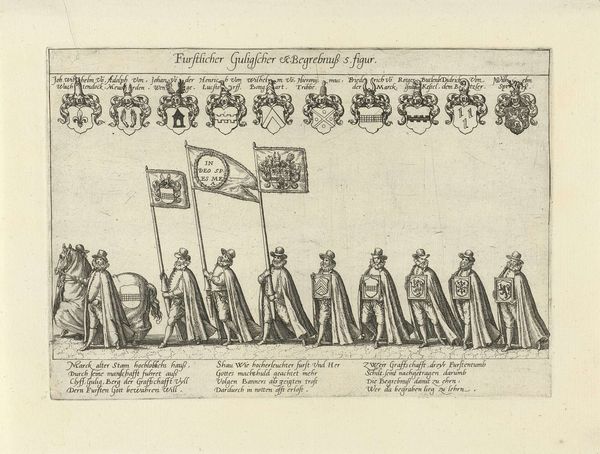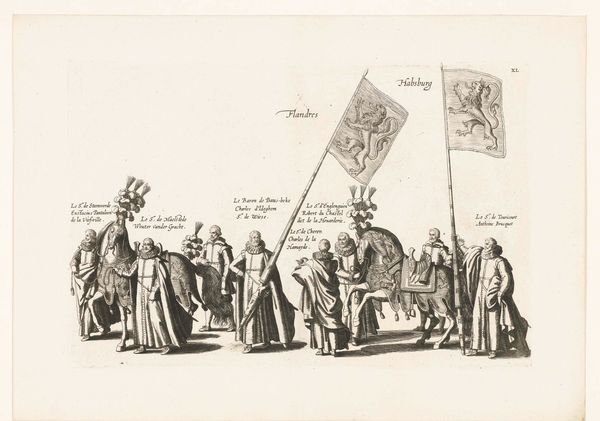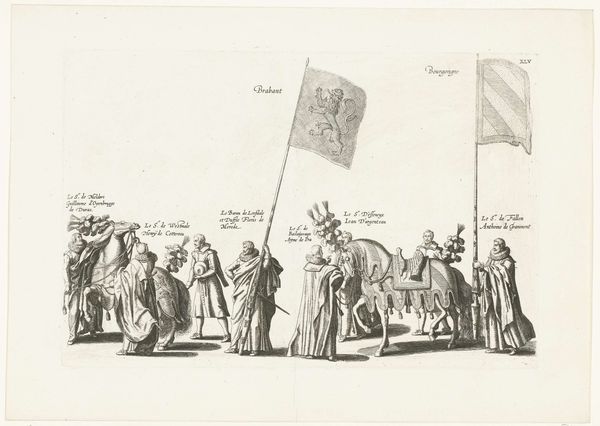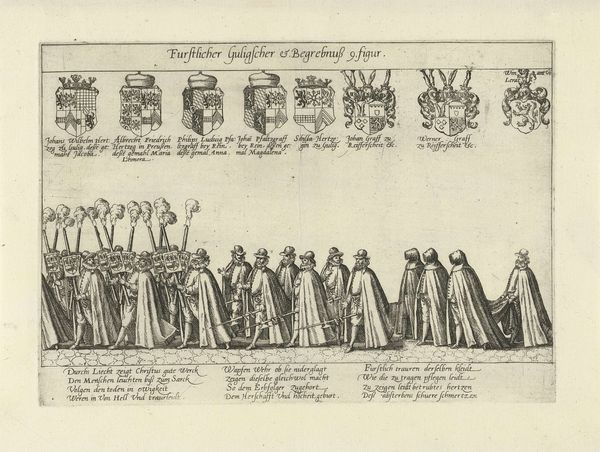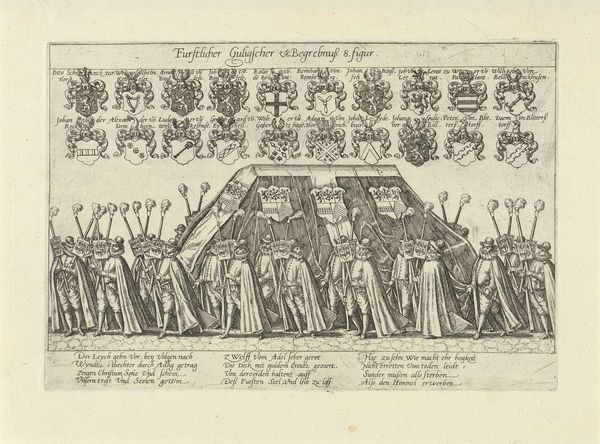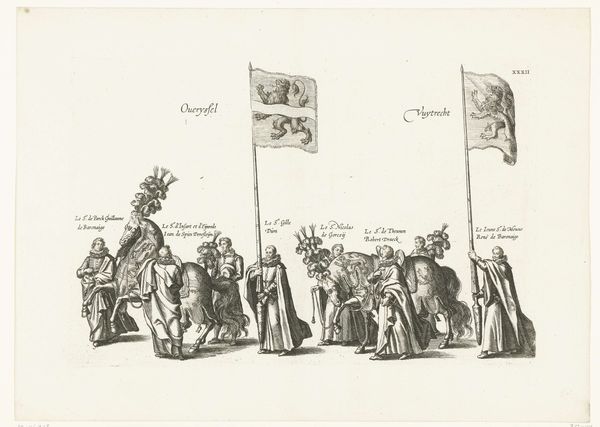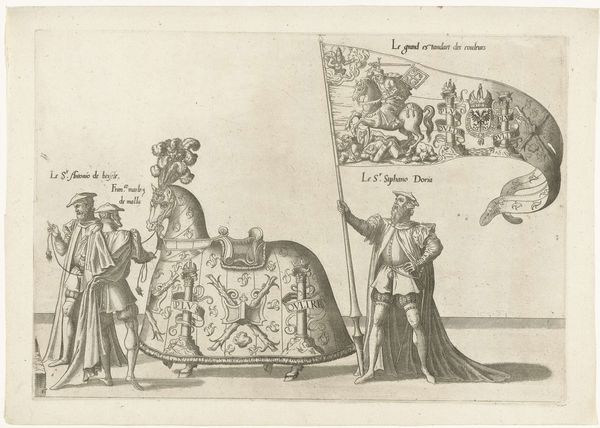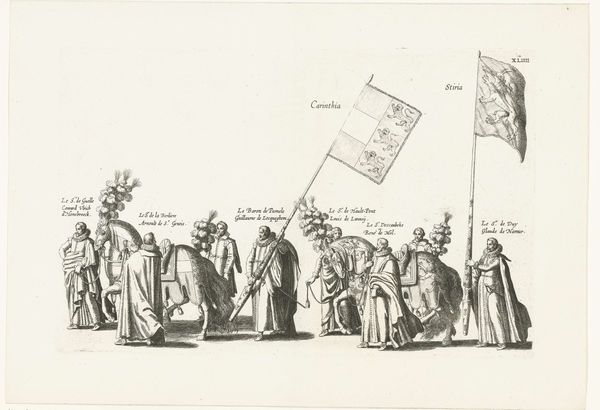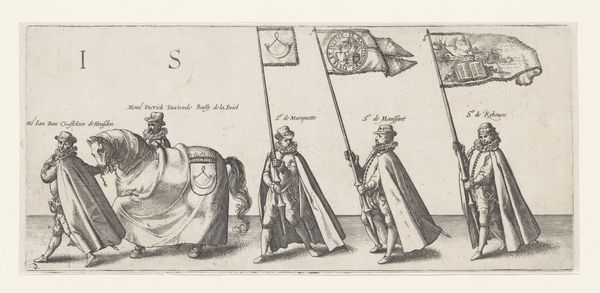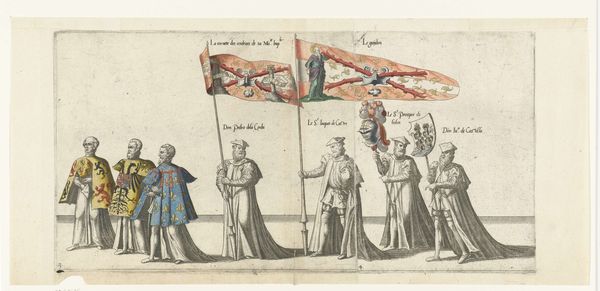
print, engraving
old engraving style
landscape
figuration
line
history-painting
engraving
Dimensions: height 182 mm, width 259 mm
Copyright: Rijks Museum: Open Domain
Curator: Editor: Here we have “Begrafenisstoet met paarden en vaandeldragers,” a 1592 engraving by Frans Hogenberg, currently residing at the Rijksmuseum. It's… very detailed, quite linear. It almost feels like a carefully constructed diagram rather than a dynamic scene. What catches your eye? Curator: Well, consider the printmaking process itself. The labour involved in creating these fine lines with such consistency is quite substantial. It makes me wonder about the audience for whom this was intended, and how this painstaking production related to the historical and social moment. It shows labor and detailed production; could it be tied to conspicuous consumption? What social structures supported and consumed this type of artwork? Editor: I suppose it must have taken hours to create, especially with all the text! So, the choice of engraving rather than painting says something about its accessibility, or perhaps intended use? Were prints like these more widely circulated than paintings might have been? Curator: Precisely! Think of the engraving as a medium, a means of disseminating information and constructing narratives. We're not just looking at an image of a funeral procession; we're observing a specific technology being employed to document and broadcast an event. Who controlled access to these images, and what political function did they fulfill? Are there parallels we can draw between the production and consumption of images in the 16th century, and now? Editor: So, it’s less about the artistry and more about understanding the historical context of its making and distribution. That makes a lot of sense. Curator: Exactly! And think about the symbolism, then what the materiality suggests about a culture of symbolism as communication of power dynamics and hierarchy. Hopefully we both now understand that art-making processes always reflect labor conditions, social status and distribution networks! Editor: Yes! Focusing on the production process gave me a new perspective on it. Thank you!
Comments
No comments
Be the first to comment and join the conversation on the ultimate creative platform.
